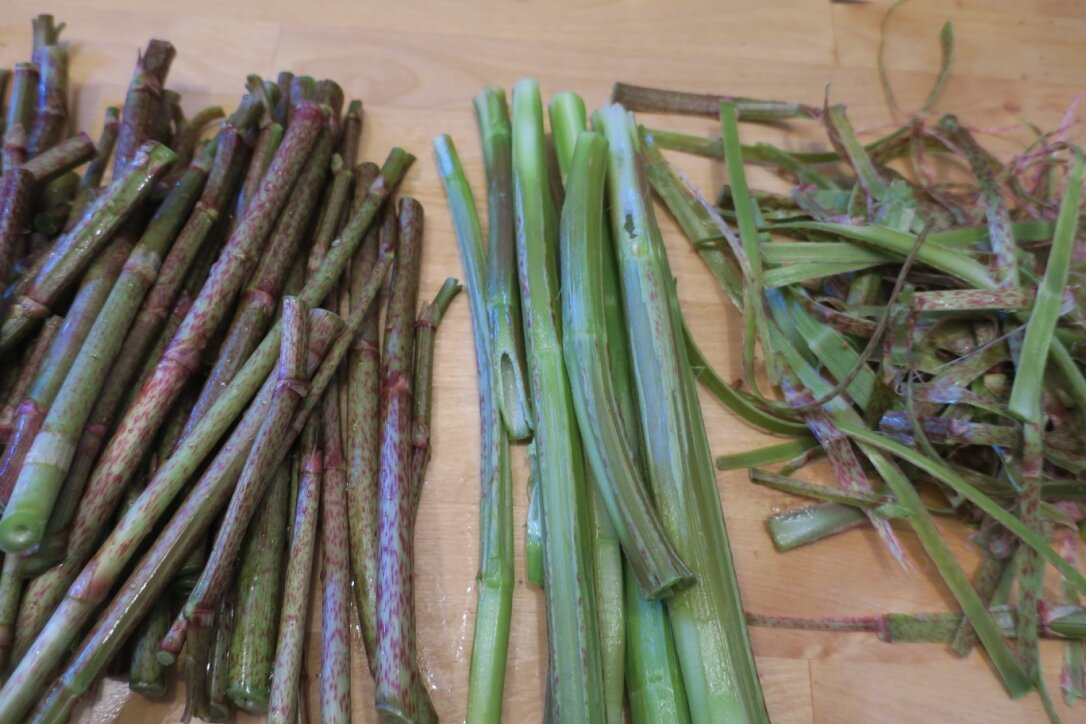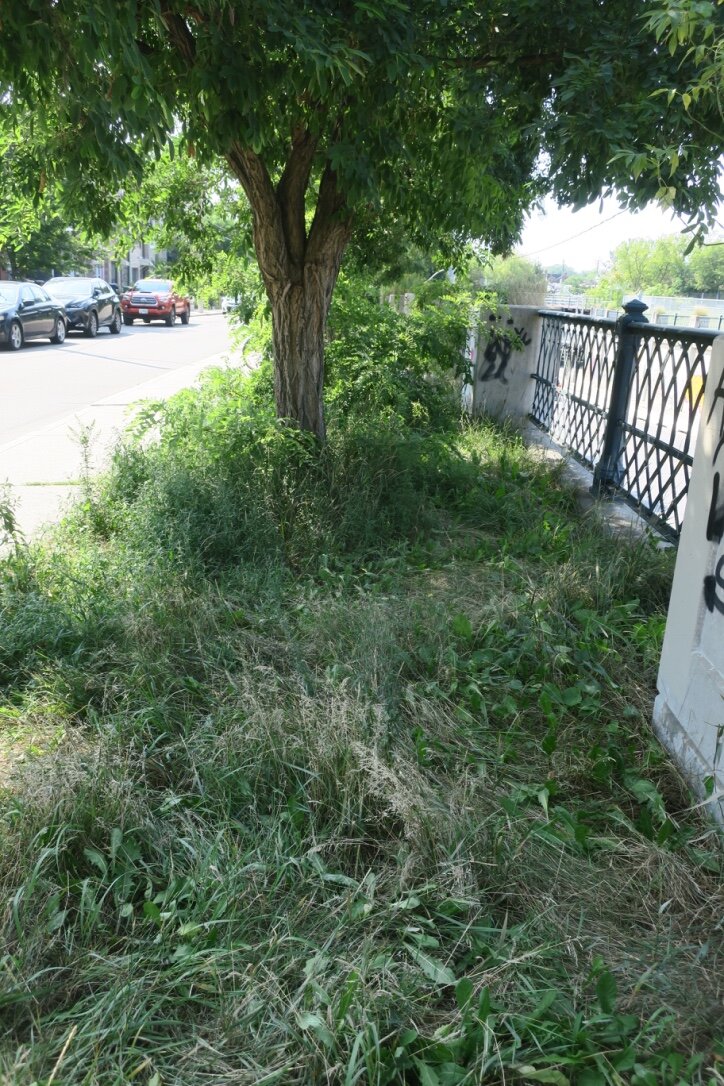There's a local patch of very entrenched knotweed (an invasive species), and I decided to do my bit by cutting the expanding shoots when they were young, and eating them. I peeled and stewed them like rhubarb, and they made a delicious compote. Added to oatmeal; also mixed it with whipped cream for a great dessert. Tastes a lot like rhubarb. (Only pick from areas you know aren't sprayed with herbicides!)
A local abandoned lot is full of knotweed.
I removed the leaves and peeled the young stalks.
After stewing the stalks with some sugar and water, I added whipped cream and topped the dessert with some redbud flowers.













